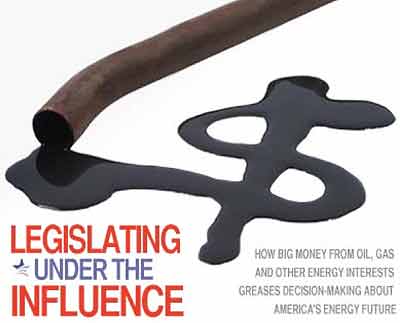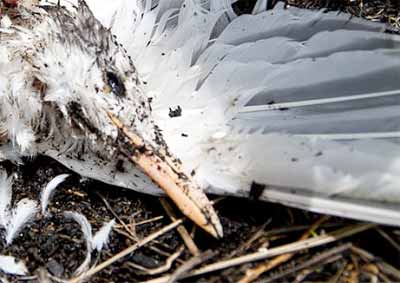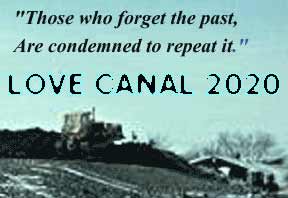Biblio
Mike Dennison. March 18, 2010. Billings Gazette.
"The state Land Board, undeterred by anti-mining protesters who disrupted the board’s Helena meeting for 45 minutes until they were arrested, voted 3-2 Thursday to approve leasing 570 million tons of state-owned coal for development of a mine in southeastern Montana’s Otter Creek Valley.
The vote by the five-member Land Board approved an $85.8 million up-front bid on the coal by Arch Coal Inc., giving the St. Louis-based mining giant a 10-year window to develop a mine in the pristine valley 150 miles east of Billings.
Gov. Brian Schweitzer, who voted for leasing the coal, extolled the long-term economic benefits of a new coal mine in the valley, saying it would bring $5 billion in tax revenue and royalties over the life of a mine and approximately $250 million a year once the mine is operating...
...The vote came after five protesters disrupted the meeting by chanting “Hands off Otter Creek — you’re not listening!” as McCulloch made a motion to vote to approve the lease.
The protesters, who had been sitting in the front row of chairs in the packed meeting room, stood and then linked arms as they sat on the floor, chanting, about 20 feet from the board members.
Schweitzer recessed the meeting and Helena Police officers ordered the room cleared, as they waited for other officers to arrive and assist with arresting the protesters. About 45 minutes later, police had handcuffed and arrested the protesters and taken them to the Lewis and Clark County jail to book them on misdemeanor charges of disorderly conduct."
Genevieve Schroder is removed from the State Land Board meeting Thursday in the Capitol. Schroder and four other Missoula residents were arrested after protesting the leasing of the state-owned Otter Creek coal. (Courtesy photo)About the Landman Report Card
A landman is an agent that represents oil & gas companies in negotiations with landowners: their job is to get the best terms for the company. This interaction is perhaps one of the most important elements of the oil and gas exploration and extraction process.
Though many landmen sign onto and abide by codes of ethics, some landowners have accounts of landman dishonesty and misbehavior. Landowners are particularly vulnerable to misinformation at this moment as it is often the first time that they make contact with the oil and gas industry. The Landman Report Card was started to assist landowners in this tricky process by allowing landowners to educate and assist each other.
This site provides tools to learn about landmen and their companies through reading reviews submitted by users. It also allows users to submit their own report cards, contact other users and use the site as their own private diary of interactions with this industry.
The Landman Report Card is produced by the ExtrAct group at MIT in collaboration with citizens' alliances in Colorado, New Mexico, Ohio and West Virginia as well as the Oil and Gas Accountability Project. ExtrACT is funded by MIT's Center for Future Civic Media, a research group dedicated to developing novel web-based technologies for citizen journalism.
To get in touch with the ExtrAct team, email us at extract@media.mit.edu.

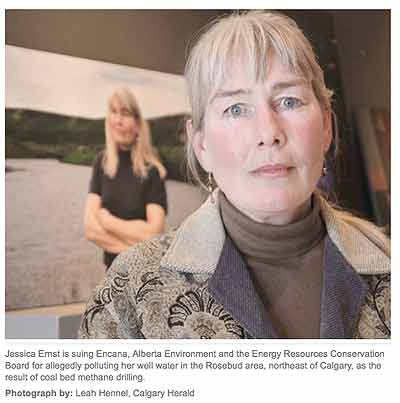
The lawyer leading a $33-million lawsuit against Encana, the Alberta government and the province’s energy regulator says the case speaks to broader environmental concerns across North America about fracking.
“It’s very much the same issues all over,” said Murray Klippenstein, a Toronto-based litigator.
Klippenstein is representing landowner Jessica Ernst, who has long argued that coal bed methane drilling around her Rosebud-area home northeast of Calgary has resulted in the pollution of her well water.
“The hydraulic fracturing issues that Jessica raises in her lawsuit are coming up more and more publicly, with more and more concerns, not only in Alberta, but in B.C. and Quebec, and all over the United States,” he said.
A lawsuit filed in Drumheller last week alleges Encana, Alberta Environment and the Energy Resources Conservation Board are all responsible for damages. She claims the natural gas giant for faulty drilling practices, and the government and board for failing to properly investigate or enforce the province’s environmental rules.
Ernst is demanding more than $10 million from each.
See: New Lawsuit Filed in Fracking Country
See: Pennsylvania lawsuit says drilling polluted water
See: Affirming Gasland
See: Breaking news: EPA vetoes Spruce Mine permit
See: WATER: Rulings Restrict Clean Water Act, Foiling E.P.A.

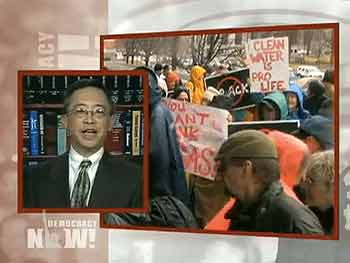
Efforts by lawmakers and regulators to force the federal government to better police the natural gas drilling process known as hydraulic fracturing, or "fracking," have been thwarted for the past 25 years, according to an exposé in the New York Times.
Studies by scientists at the U.S. Environmental Protection Agency on fracking have been repeatedly narrowed in scope by superiors, and important findings have been removed under pressure from the industry.
The news comes as the EPA is conducting a broad study of the risks of natural gas drilling with preliminary results scheduled to be delivered next year.
Joining us is Walter Hang, president of Toxics Targeting, a firm that tracks environmental spills and releases across the country, based in Ithaca, New York, where fracking is currently taking place. [includes rush transcript]
Gas drilling brings with it the need to inject methane gas into the ground to store it. Although gasoline and natural gas are chemically unrelated, the storage of both natural gas and fracking brine in underground rock formations the potential spills associated with trucking the waste and storing it in open plastic lined pits may contribute to the contanimation of well water.
The secret formula of the fluids used by the gas industry have made it hard for researchers to do the type of analysis Joe Ryan has done about gasoline.
Dr. Joe Ryan is with the Environmental Engineering Program in the Department of Civil, Environmental, and Architectural Engineering at the University of Colorado. He discusses benzene and its potential to pollute ground water in even small amounts.
At a July 9, 2010 EPA meeting in Texas, as reported by KERA. North Texas Public Television and Radio, Tim Ruggiero says he's living proof the state isn't protecting the public.
"I am one of those cases of contaminated drinking water. It's why I'm here tonight," Reggiero told the EPA.
Ruggiero says he tested his water just before and after gas producers began drilling on his property. He says water samples collected after the drilling started contain an unknown chemical similar to the gas additive MTBE. Ruggiero also complains of air contamination and state agencies unwilling to take action.
How much gasoline does it take to contaminate drinking water? Joe Ryan explains:
Not much. Prior to the EPA's 1988 UST regulations and their final implementation deadline in 1998, a slow leak from a 10,000 gallon gasoline storage tank at the neighborhood service station was virtually undetectable to the station operator but still quite hazardous to nearby groundwater supplies. The hazards of gasoline are mainly attributable to the BTEX compounds -- benzene, toluene, ethylbenzene, and xylenes (see below).
The benzene content of typical gasoline is 0.76% by mass (gasoline composition). A spill of 10 gallons of gasoline (only 0.1% of the 10,000 gallon tank, a quantity undetectable by manual gauging and inventory control) contains about 230 grams of benzene (using a gasoline density of 0.805 grams per milliliter). The EPA's Maximum Contaminant Level (MCL) for benzene is 5 parts per billion (ppb), or 5 micrograms per liter, in drinking water. The density of gasoline is about 0.8 grams per milliliter, so the benzene in a 10 gallon gasoline leak can contaminate about 46 million liters, or 12 million gallons, of water!
INVITATION BASIN is a community project actively seeking public participation.
BASIN is supported by the US EPA, the City of Boulder, the Keep it Clean Partnership, BCWI and BCN
See:U.S. EPA. Delivering Timely Environmental Information to your Community Boulder Area Sustainability Information Network(BASIN). September 2001. (98 pp.)
See: Boulder Area Sustainability Information Network (BASIN) EPA Grant Number: R827057
The energy industry’s money floods Congress and regulatory agencies.
Executive Summary
Long before BP’s Deepwater Horizon well began belching oil into the Gulf of Mexico, BP and the rest of the energy industry had turned loose a gusher of cash in Washington, saturating Congress and the federal government’s regulatory apparatus.
In the last decade alone, big energy has pumped more than $2.9 billion into electing and lobbying federal officials and candidates, according to campaign finance and lobbying disclosure reports.
That’s about $5.5 million for each of the 535 seats in the House and Senate.
As energy dollars flow freely in Washington, the development of alternative energy sources proceeds slowly, at best, and the nation’s reliance on energy produced overseas grows deeper. Meanwhile, at the industry’s urging, a 27-year moratorium on oil and gas drilling off the east coast has been allowed to expire and legislation to cap carbon emissions, pushing oil-gulping industries to find new energy sources and use petroleum more efficiently, has stalled in Congress.
See: Dirty Energy Money
See: Big Money Drives Up the Betting on the Marcellus Shale
See: Opponents to Fracking Disclosure Take Big Money From Industry
See: Fueling Washington
Lenape Resources, Inc. is the operating arm of Lenape Energy, Inc. Along with its sister companies Lenape Drilling, Inc. and Lenape Gathering Corp, Lenape Resources is involved in the exploration, development, gathering and marketing of oil and natural gas resources in the Appalachian basin with a primary focus in the states of New York and Pennsylvania.
Lenape has been disposing of drilling wastewater in Caledonia NY, 27 miles southwest of Rochester, NY on a permit which expired in 2007 but was administratively continued.
See: Public Notice No. 2010- 25 Permit No. NYU119702 Date: August 3, 2010
The EPA oversees the Underground Injection Control Program. Under the Eleventh amendment to the U.S. Constitution, if the state violates a Federal law, then the courts have jurisdiction, but if it's a purely state matter, they don't. How did Lenape manage to go three years without a permit to dispose of it's fracking waste water?
According to the website, Endangered Environmental Laws, "...over time, courts have transformed [the Eleventh Amendment] into a sweeping doctrine of state “sovereign immunity,” unmoored from the Constitution’s text, and in recent years, a conservative bloc of the Supreme Court has further expanded states’ immunity from private lawsuits. In the environmental context, this has led to near-total immunity of state agencies from citizen suits under the federal coal-mining statute; to similar challenges (so far unsuccessful) to citizen litigation under the Clean Air Act and the Endangered Species Act; and to dismissal of state employees’ whistleblower complaints under the Solid Waste Disposal Act and other laws."
See: Babcock, H. “Effect of the United States Supreme Court's Eleventh Amendment Jurisprudence on Clean Water Act Citizen Suits: Muddied Waters, The.” Oregon Law Review 83 (2004): 47.
"The states are permitted to act unjustly only because the highest court in the land has, by its own will, moved the middle ground and narrowed the nation's power.
With rare exception, many people, including Indian tribes, federal employees, patent holders, the elderly, and the disabled, find themselves unable to vindicate rights granted by federal laws in any court when the defendant is a state or a state agency."
Violations are prosecuted only after a dramatic event such as an explosion leading to workers' deaths. Even when the dumping of toxic waste is prosecuted, the sentences' regulatory effect is minimal. Environmental felons absorb these costs of doing business.
However, the Justice Department sees it differently. According to John C. Cruden, Acting Assistant Attorney General for the Justice Department’s Environment and Natural Resources Division, "The Safe Water Drinking Act and the regulations overseeing oil and gas related injection wells are designed to ensure safe sources of drinking water. Violations of these laws will be investigated and prosecuted to the fullest extent of the law." Mr. Cruden was Chief Legislative Counsel, U.S. Army (1988-1991).
See: Oil Company and Two Executives Plead Guilty to Environmental Crimes
See: Texas Transportation Company and Officials Sentenced for Hazmat Violations
See also: Gas Drillers Plead Guilty to Felony Dumping Violations
John Morgan and Michael Evans (PDF) (1 pg, 32K)
United States District Judge Sean J. McLaughlin imposed the sentences on John Morgan, age 54, of Sheffield, Pennsylvania, and Michael Evans, age 66, of La Quinta, California. Mr. Morgan received a sentence of three years probation, a $4,000 fine, eight months home detention and eighty hours community service. Mr. Evans received a sentence of three years probation, a $5,000 fine, ten months home detention and one hundred hours community service.
See: Drilling Wastewater Disposal Options in N.Y. Report Have Problems of Their Own - ProPublica
Mountaintop removal and slickwater drilling for natural gas both have been challenged by experts for the environmental damages that occur. The pollution has been well documented in public testimony and observation and has proceeded without input from peer-reviewed scientific studies, making the people who live near these extraction processes human experiments in methods unproven to be safe in the long term. (Neil Zusman, 2010-11-10.)
During the last two decades, mountaintop removal mining in Appalachia has destroyed or severely damaged more than a million acres of forest and buried nearly 2,000 miles of streams. Leveling Appalachia: The Legacy of Mountaintop Removal Mining, a video report produced by Yale Environment 360 in collaboration with MediaStorm, focuses on the environmental and social impacts of this practice and examines the long-term effects on the region’s forests and waterways.
At a time when the Obama administration is reviewing mining permit applications throughout West Virginia and three other states, this video offers a first-hand look at mountaintop removal and what is at stake for Appalachia’s environment and its people.
Leveling Appalachia: The Legacy of Mountaintop Removal Mining, an e360 video examining the environmental and human impacts of this mining practice, won the award for best video in the 2010 National Magazine Awards for Digital Media. Watch the video.
See: Marsh Fork Elementary: Journey Up Coal River | A Community and Strip Mining
See: Mountaintop Removal (Film)
See: Tree spiker : from Earth First! to lowbagging: my struggles in radical environmental action
See: Bluedaze. Mountain Top Removal for Hydraulic Fracturing Sand
WASHINGTON — As the players here remake the nation’s vast regulatory system, they have been grappling with a subject that is more the province of poets and philosophers than bureaucrats: what is the value of a human life?
The answer determines how much spending the government should require to prevent a single death.
To protests from business and praise from unions, environmentalists and consumer groups, one agency after another has ratcheted up the price of life, justifying tougher — and more costly — standards...
...The Environmental Protection Agency set the value of a life at $9.1 million last year in proposing tighter restrictions on air pollution. The agency used numbers as low as $6.8 million during the George W. Bush administration.
The Food and Drug Administration declared that life was worth $7.9 million last year, up from $5 million in 2008, in proposing warning labels on cigarette packages featuring images of cancer victims.
The Transportation Department has used values of around $6 million to justify recent decisions to impose regulations that the Bush administration had rejected as too expensive, like requiring stronger roofs on cars.
See: Climate Co-benefits and Child Mortality Wedges | Fracking Resource Guide.
What is the value of a human life? Climate change is going to kill millions of children, does it matter that they're not yours?
See also: Associated Press. "How to value life? EPA devalues its estimate: $900,000 taken off in what critics say is way to weaken pollution rules." 2008-07-10.
Lisa Jackson's Twitter feed is one of the ways the Environmental Protection Agency communicates with the public. She has 13,000 followers and follows Barack Obama, Greenversations, the official Blog of the U.S. Environmental Protection Agency, among others. I don’t know if she’s read many of the eco-blogs covered on this site, but she’s not following them on Twitter.
Public meetings have been the traditional way that the EPA has defensively communicated with the public in the past. Molly Ivins has written about Bob Spiegel's 1992 videotapes on the Edison Wetlands (New Jersey) in Bushwhacked.
I attended a meeting on hydraulic fracturing in Binghamton last year. The EPA seemed to do a great job. Judith Enck was a good listener. Bill Wolfe has a report on that meeting at WolfeNotes.com, "On the Threshold of a Fracking Nightmare".
Is our contact with EPA an outcome of a new transparency? How is it going?
Despite calls for transparency from Republicans (Sen. Johanns) and Democrats, (Rep. Hinchey); the Obama administration has signalled that the U.S. is intending to develop natural gas and promote Tar Sands development before environmental impact studies have been completed. There have been no social impact assessments (Freudenburg, 1986) on this development rush, just a lot of public gushing over the new Shalellionaires.
Despite the recent (1/11/11) announcement of a $7 million dollar EPA grant to fund cumulative human health risk assessment research, EPA science still emphasizes engineering over socioeconomic studies in both their selection of reviewers for the upcoming study of hydraulic fracturing and their communication with the public about toxic threats close to home.
Last year, a USGS (U.S. Geological Society) "fish" scientist was one of the co-authors of a study reported by Coal Tattoo:
West Virginians who live near streams polluted by coal mining are more likely to die of cancer, according to a first-of-its kind study published by researchers at West Virginia University and Virginia Tech.
Hitt, Nathaniel P., and Michael Hendryx. “Ecological Integrity of Streams Related to Human Cancer Mortality Rates.” EcoHealth 7, no. 1 (March 2010): 91-104.
Both the EPA and the USGS have many scientists doing research that cross over their specific areas of responsibility. The list of media contacts found below leaves me wondering how I would react if I were a West Virginian stream dweller. What about the stream by the school? What about our animals? Who can I call?
I have not found a Hydraulic Fracturing media representative as of 1/11/11. Hydraulic Fracturing deserves a subject area and its own media representative from this Federal Agency. (Neil Zusman, 2011-01-11.)
See: "Seven Priorities for EPA’s Future", a Memorandum from Lisa P. Jackson, Administrator to all EPA Employees. (Jan. 12, 2010).
Air Quality
Chemical Risk Management
Children's Health
Climate Change
Drinking Water
Drinking Water Security
Emergency Response
Endocrine Disruptors
Enforcement
Enforcement Advisory
Environmental Education
Environmental Information
Environmental Justice
Federal advisory committees
FOIAs (Freedom of Information Acts)
Fuels
Ground Water
Hazardous Waste
Health Risk Assessments
Homeland Security
Radiation
Recycling
Solid Waste
Superfund
Toxics
Tribal Issues
Underground Storage Tanks
Wastes
Wastewater
Water
Watersheds
Wetlands
Yucca Mountain
Ms. Jackson maintains a blog and this Twitter feed and is the person responsible for the Office of the Administrator. Press releases may be received by email automatically here:
News Releases issued by the Office of the Administrator
Get News by Email
Media Contacts
Find contacts for specific topics in the table on the Media Contacts link above or call the general phone line: 202-564-4355.
See: EPA in the Crosshairs | Mixplex
Freudenburg, William R. “Social Impact Assessment.” Annual Review of Sociology 12 (January 1, 1986): 451-478. (subscription required).
Directed primarily at pregnant and nursing women and babies, Living Downstream discusses the effects that pollution and toxins have on us through our interconnected food chain.
Sandra Steingraber is an internationally recognized expert on the environmental links to cancer and reproductive health. She lives in Ithaca, New York. Read More
A Bridge to Somewhere - Responding to the President's Cancer Panel Report (Part 3) - July 8, 2010
Over the past nine weeks, the President’s Cancer Panel report has been provoking passionate responses from across the country. In a recent editorial, the Los Angeles Times praised the report for broadening the discussion of cancer to include environmental carcinogens and for pointing out how woefully inadequate is our system of regulating them. Likewise, the National Council of Churches applauded the panel for its focus on children, who are more vulnerable to the harmful effects of chemical pollution and in whom cancer rates are rising.
By contrast, an editorial in Chemical & Engineering News condemned the report as alarmist, and the American Cancer Society called it “unbalanced.”
It’s easy to guess what the editor-in-chief of the American Chemical Society’s weekly magazine might find objectionable—perhaps the report’s conclusion entitled “Safer Alternatives to Many Currently Used Chemicals Are Urgently Needed.” But an attack by the nation’s leading cancer charity against a report that argues for cancer prevention via stronger environmental reform deserves a closer look. Especially since one of the report’s authors, oncologist LaSalle Leffall, is a former national president of the American Cancer Society. (And it was George W. Bush who appointed both Leffall and his coauthor, immunologist Margaret Kripke, to their posts—hardly preconditions for a radical takeover.)
See: Living Downstream: The Film (2010)
Directed by Chanda Chevannes
See: Sandra Steingraber. "Shale Game". Orion Magazine. May/June 2010.
See: Sandra Steingraber. "The Whole Fracking Enchilada". Orion Magazine. Sept/Oct 2010.
You saw it on 'Earth To America!', now see it here. The Blue Man Group really gets the message across loud and clear with this great video. Can you hear? From: stopglobalwarming.org
Earth to America!
Larry David standup: "Rich Pricks and Poor Schmucks." Live at The Colosseum at Caesars Palace, Las Vegas, November 17, 2005.
LEAN was founded to help Louisiana citizens change the balance of power and challenge the continued economic and ecological destruction that had become institutionalized in Lousiana.
By empowering more than one hundred grassroots, community organizations, and countless individuals, LEAN has already helped in gaining a tremendous foothold in the war to make Louisiana's communities safer, healthier places to live. LEAN's expanded efforts will allow the progress already made to continue.
By Mark Schleifstein, The Times-Picayune. New Orlean, LA., December 18, 2009.
"The state Department of Environmental Quality has demanded that the federal Environmental Protection Agency rescind its recent finding that greenhouse gases endanger present and future generations, and take no action to require industries and small businesses to reduce greenhouse gas emissions."
Blog by LOVECANAL 2020.
SEE: April 6, 2010. "Never a Single Case? How about 15!"
The Natural Resources Defense Council has complied a list of incidents where drinking water has been contaminated and hydraulic fracturing is a suspected cause. There are many, many, other cases around the country, but these 15 represent a group where the evidence was provided by a homeowner with knowledge that a nearby well was recently fractured and specifically included that information in reports, according to the NRDC.
See also: April 11, 2010. "See What's Coming to NY! Gas Drilling's Rural Impact."











